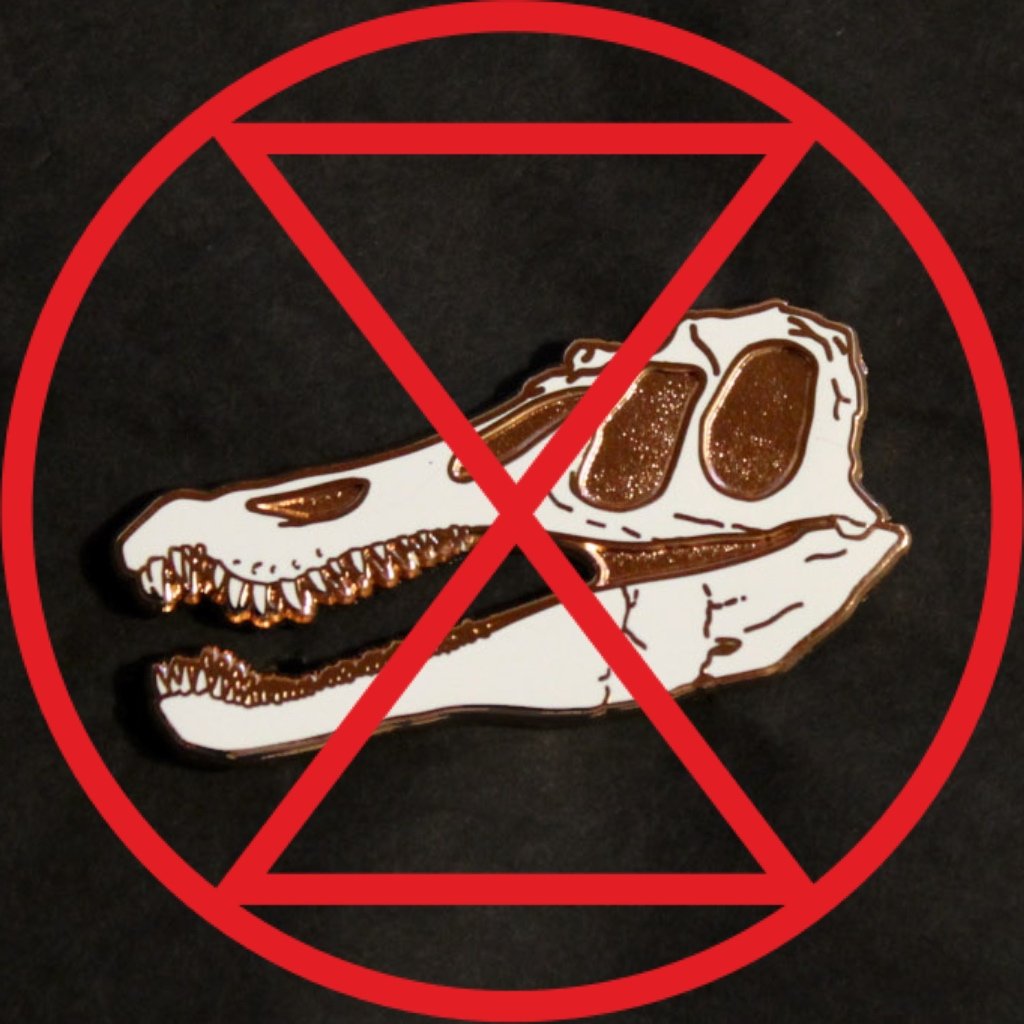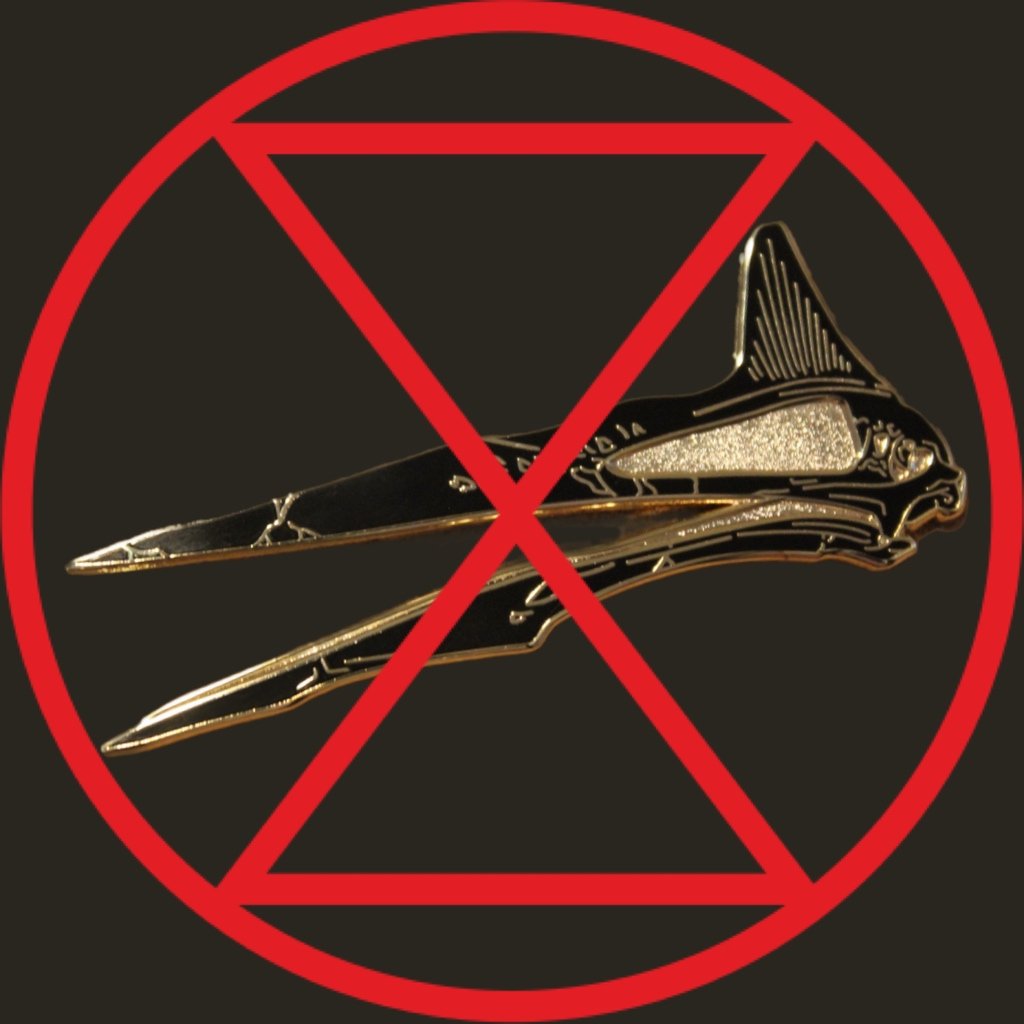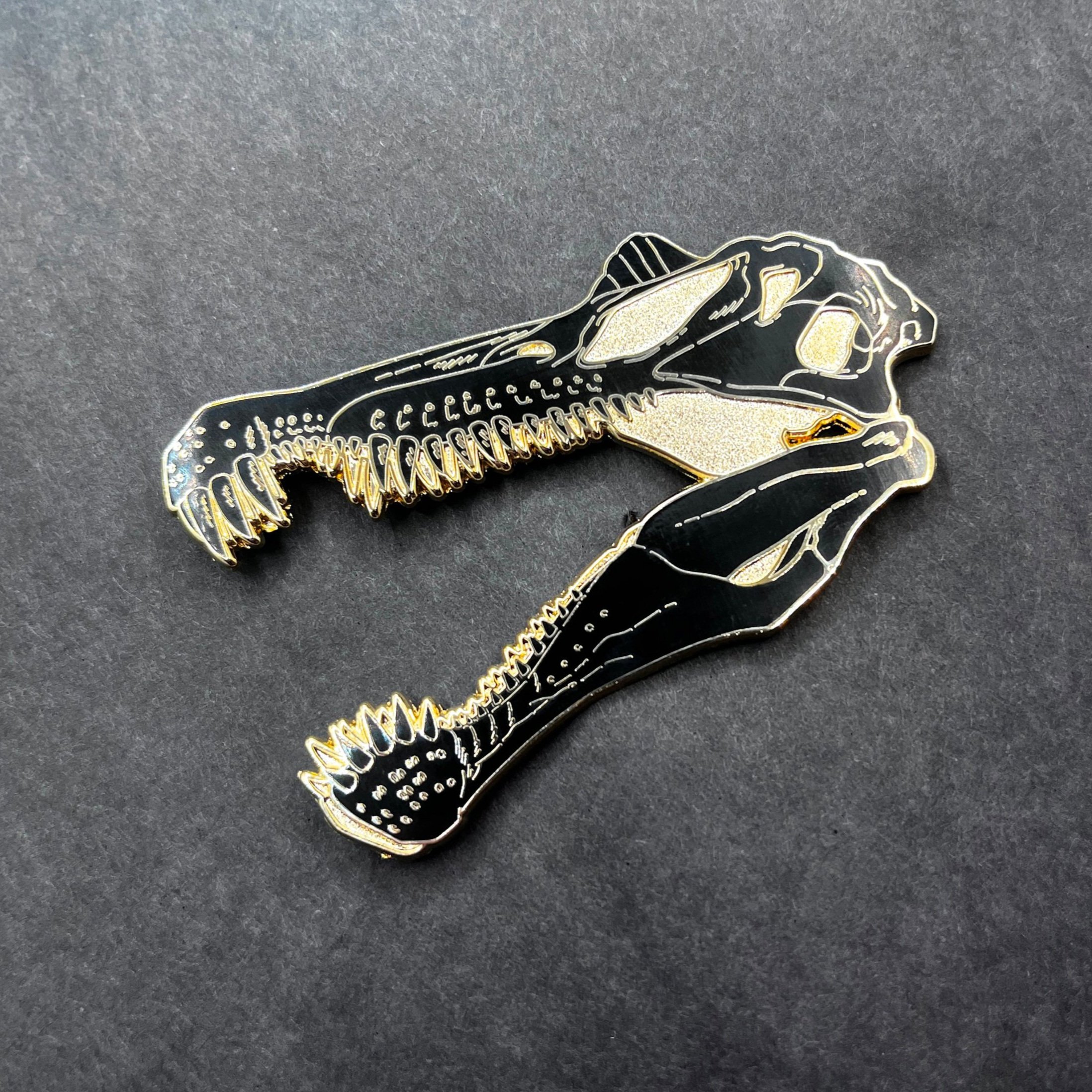THE EXTINCTION PINS
$5 from every single Extinction Pin goes directly towards environmental causes such as WildEarth Guardians
(you’ll find more information about them below!).
Extinction pins are only available in gold with black enamel, and in very limited quantities. Once a pin design “goes extinct” its mold is destroyed; it can never be made again.
Available Designs!
-
Amphicyon
The “Bear Dog”, Amphicyon is an extinct genus of large carnivorans belonging to the family Amphicyonidae, subfamily Amphicyoninae, from the Miocene epoch.

-
Ankylosaur Gargoyleosaurus
Gargoyleosaurus is one of the earliest ankylosaurs known from reasonably complete fossil remains. The holotype was discovered in 1995 at the Bone Cabin Quarry West locality, in Albany County, Wyoming in exposures of the Upper Jurassic Morrison Formation.

-
Casteroides
Castoroides, or giant beaver, is an extinct genus of enormous, bear-sized beavers that lived in North America during the Pleistocene.

-
Dorygnathus
Dorygnathus (pronounced “Dory-NAY-fus”) was a genus of rhamphorhynchid pterosaur that lived in Europe during the Early Jurassic period, when shallow seas flooded much of the continent.

-
Masiakasaurus
Masiakasaurus (pronounced “Ma-SHI-ka-saur-us”) is a genus of small predatory noasaurid theropod dinosaurs from the Late Cretaceous of Madagascar. In Malagasy, masiaka means "vicious"; thus, the genus name means "vicious lizard".

-
Titanis
Titanis, the “Terror Bird”, is a genus of phorusrhacid, an extinct family of large, predatory birds, in the order Cariamiformes that inhabited the United States during the Pliocene and earliest Pleistocene.

The Extinction Symbol represents the threat of a so-called “Anthropocene” extinction event on Earth; a circle representing the planet and an X stylized hourglass is a warning that time is running out.
We have donated $1,250 so far!
You can find a link to donate directly at the bottom of this page
The symbol was originally conceived by anonymous East London artist Goldfrog ESP who encourages its continued use to spread awareness of its vital message.WHO HAS ALREADY DISAPPEARED?
-
Baryonyx
The very first of the Extinction Pins, Baryonyx started it all with both Gold/Black and Rosegold/White. Baryonyx is a genus of theropod dinosaur which lived in the Barremian stage of the Early Cretaceous period, about 130–125 million years ago.
100 MADE (50 in Gold and 50 in Rosegold)

-
Quetzalcoatlus Kickstarter Edition
An XL Kickstarter Exclusive pin from the original 2020 campaign; Quetzalcoatlus northropi. Quetzalcoatlus is a genus of azdarchid pterosaur known from the Late Cretaceous Maastrichtian age of North America.
50 MADE (only in Gold)

-
Spinosaurus Kickstarter Edition
An XL Kickstarter Exclusive pin from the 2023 campaign. Spinosaurus is a genus of spinosaurid dinosaur that lived in what now is North Africa during the Cenomanian to upper Turonian stages of the Late Cretaceous period, about 99 to 93.5 million years ago.
100 MADE (only in Gold)

-
Smilosuchus
Smilosuchus is an extinct genus of leptosuchomorph parasuchid from the Late Triassic of North America.
100 MADE (50 in Gold and 50 in Rosegold)

-
Elasmosaurus
Elasmosaurus is a genus of plesiosaur that lived in North America during the Campanian stage of the Late Cretaceous period, about 80.5 million years ago.
100 MADE

WildEarth Guardians
The Paleo Press is proud to support WildEarth Guardians. WEG protects and restores the wildlife, wild rivers, wild places, and health of the American West. Founded in 1989, Guardians has a long history of conservation successes protecting ancient forests, rivers, other threatened landscapes, and wildlife. They currently operate four major programs-Wildlife, Wild Places, Wild Rivers, and Climate & Energy-and rely on a potent combination of education, scientific analysis, public advocacy, litigation, and on-the-ground restoration. They have more than 194,000 members, e-activists, and followers that support their work, the majority of whom live in the 11 western states. Guardians has offices in Arizona, Colorado, Idaho, Montana, New Mexico, Oregon, and Washington and our 35-person staff includes lawyers, policy experts, scientists, ecosystem restoration experts, community organizers, and fundraisers.


